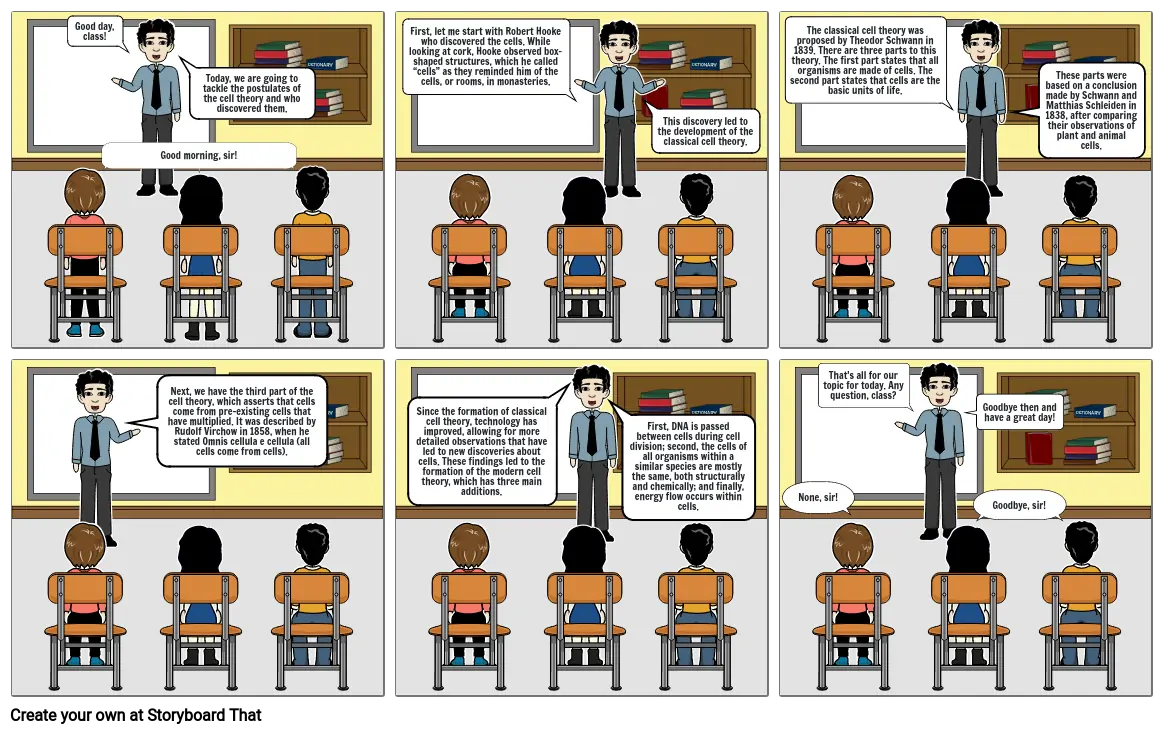Cell Theory

نص القصة المصورة
- Good day, class!
- Good morning, sir!
- Today, we are going to tackle the postulates of the cell theory and who discovered them.
- First, let me start with Robert Hooke who discovered the cells. While looking at cork, Hooke observed box-shaped structures, which he called “cells” as they reminded him of the cells, or rooms, in monasteries.
- This discovery led to the development of the classical cell theory.
- The classical cell theory was proposed by Theodor Schwann in 1839. There are three parts to this theory. The first part states that all organisms are made of cells. The second part states that cells are the basic units of life.
- These parts were based on a conclusion made by Schwann and Matthias Schleiden in 1838, after comparing their observations of plant and animal cells.
- Next, we have the third part of the cell theory, which asserts that cells come from pre-existing cells that have multiplied. It was described by Rudolf Virchow in 1858, when he stated Omnis cellula e cellula (all cells come from cells).
- Since the formation of classical cell theory, technology has improved, allowing for more detailed observations that have led to new discoveries about cells. These findings led to the formation of the modern cell theory, which has three main additions.
- First, DNA is passed between cells during cell division; second, the cells of all organisms within a similar species are mostly the same, both structurally and chemically; and finally, energy flow occurs within cells.
- None, sir!
- That's all for our topic for today. Any question, class?
- Goodbye then and have a great day!
- Goodbye, sir!
تم إنشاء أكثر من 30 مليون من القصص المصورة

